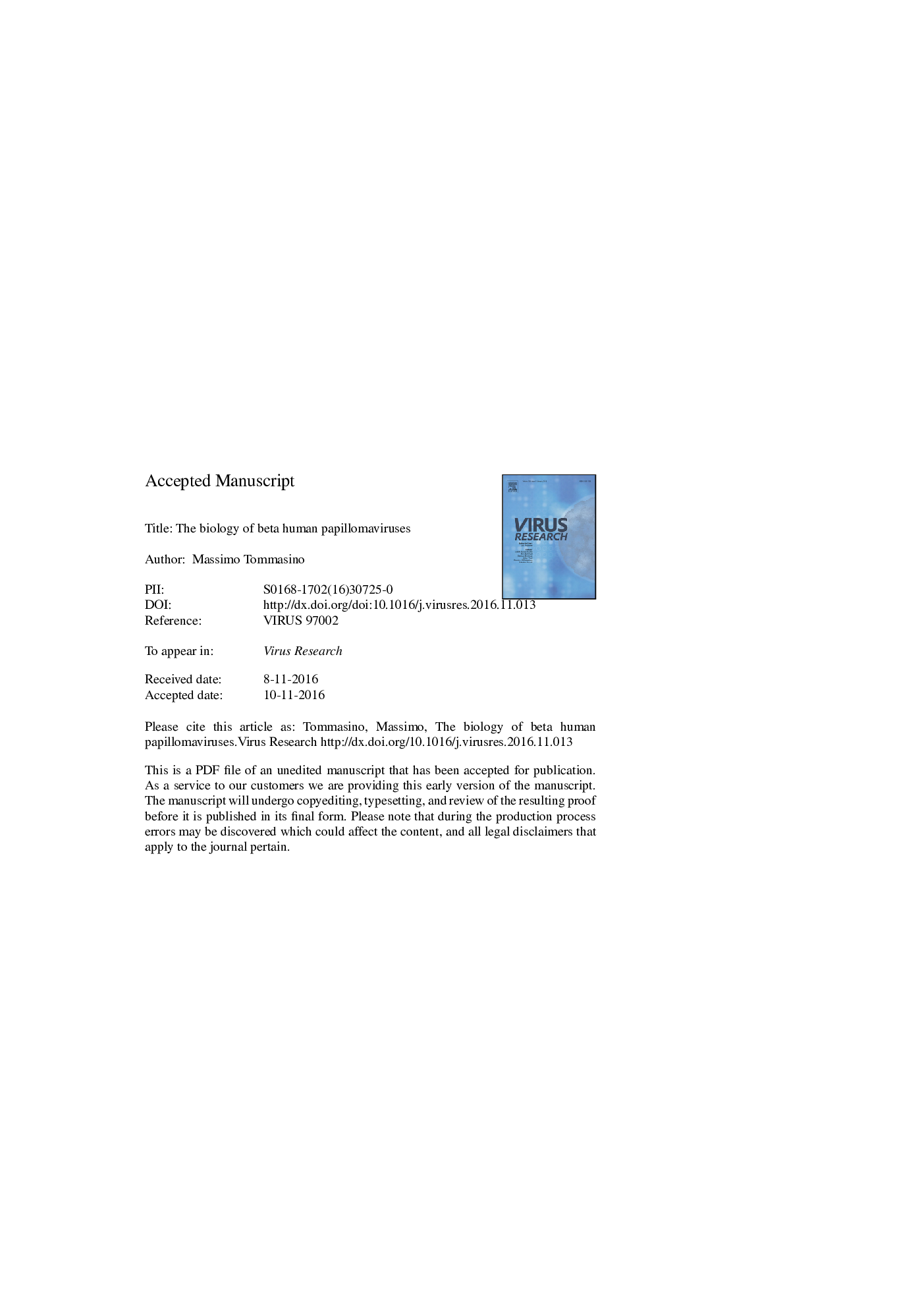| Article ID | Journal | Published Year | Pages | File Type |
|---|---|---|---|---|
| 5675594 | Virus Research | 2017 | 32 Pages |
Abstract
The beta genus comprises more than 50 beta human papillomavirus (HPV) types that are suspected to be involved, together with ultraviolet (UV) irradiation, in the development of non-melanoma skin cancer (NMSC), the most common form of human cancer. Two members of the genus beta, HPV5 and HPV8, were first identified in patients with a genetic disorder, epidermodysplasia verruciformis (EV), that confers high susceptibility to beta HPV infection and NMSC development. The fact that organ transplant recipients (OTRs) with an impaired immune system have an elevated risk of NMSC raised the hypothesis that beta HPV types may also be involved in skin carcinogenesis in non-EV patients. Epidemiological studies have shown that serological and viral DNA markers are weakly, but significantly, associated with history of NMSC in OTRs and the general population. Functional studies on mucosal high-risk (HR) HPV types have clearly demonstrated that the products of two early genes, E6 and E7, are the main viral oncoproteins, which are able to deregulate events closely linked to transformation, such as cell cycle progression and apoptosis. Studies on a small number of beta HPV types have shown that their E6 and E7 oncoproteins also have the ability to interfere with the regulation of key pathways/events associated with cellular transformation. However, the initial functional data indicate that the molecular mechanisms leading to cellular transformation are different from those of mucosal HR HPV types. Beta HPV types may act only at early stages of carcinogenesis, by potentiating the deleterious effects of other carcinogens, such as UV radiation.
Keywords
Related Topics
Life Sciences
Immunology and Microbiology
Virology
Authors
Massimo Tommasino,
